Testing a Chinese x86 CPU: A Deep Dive into Zen-based Hygon Dhyana Processors
by Dr. Ian Cutress & Wendell Wilson on February 27, 2020 9:00 AM ESTBenchmarks: Windows
For both systems, we installed Windows: Windows 10 Pro on the small 8-core Dhyana system, and Windows 10 Enterprise on the big dual 32-core Dhyana Plus server. With AVX/AVX2 not working properly, our range of testing was limited. As mentioned previously, some software didn’t even want to run on one system or the other, such as CPU-Z on the server.
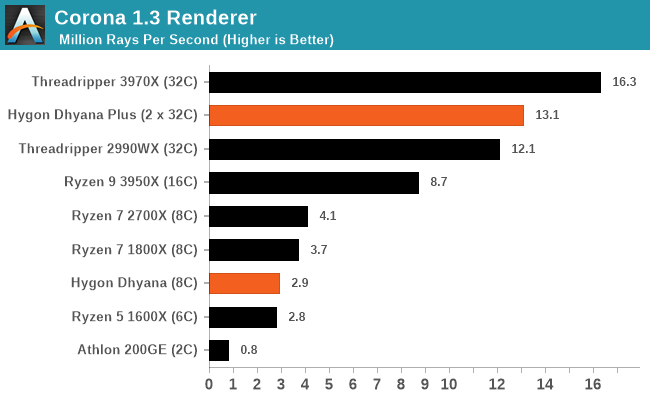
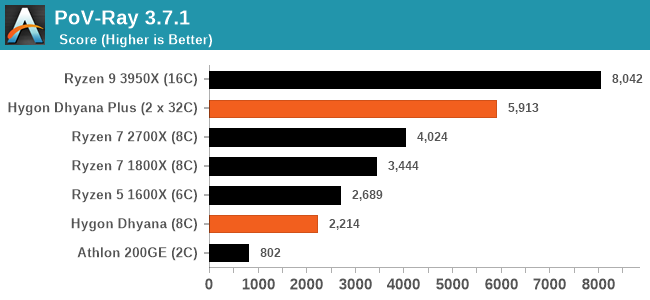

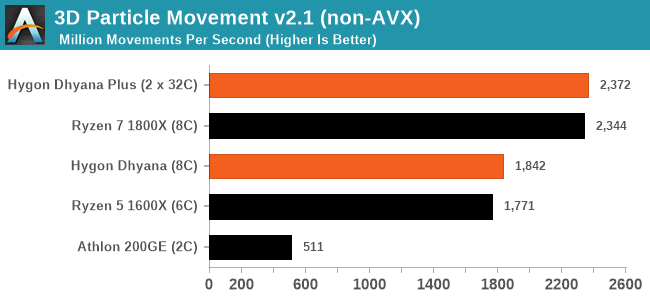
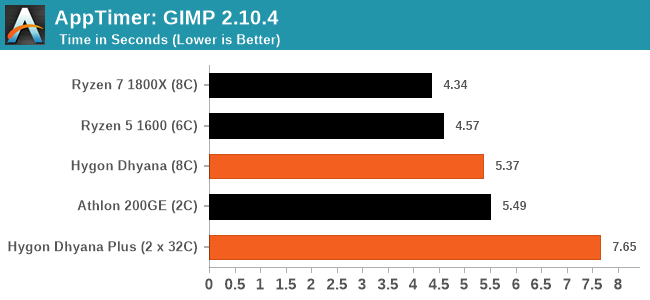
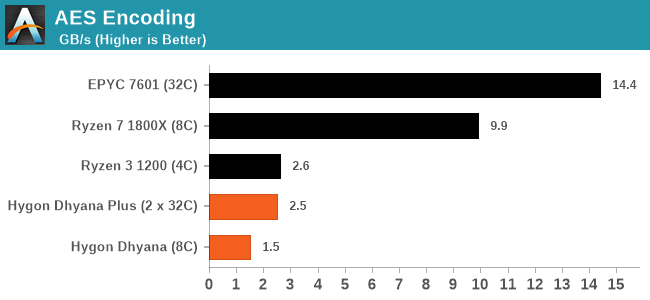

From the numbers we can see that our 8-core Dhyana processor falls somewhere between the 6-core Ryzen 5 1600X and the 8-core Ryzen 6 1800X, due to clock speeds, but on particular tests it gets hammered by even the Athlon 200GE. The dual 32-core Dhyana Plus server seems to be in all sorts of a mess, often beaten by the Ryzen 7 1800X, or can now be easily beaten by the Ryzen 9 3950X. The one benchmark where it did really well was Corona – a memory/NUMA agnostic integer based renderer – it seems like a match made in heaven.










133 Comments
View All Comments
anarekist - Thursday, February 27, 2020 - link
that was a great and detailed article, very much appreciated.Notmyusualid - Sunday, March 1, 2020 - link
I very much enjoyed it also.PeterCordes - Thursday, February 27, 2020 - link
RDRAND isn't just a PRNG, it's still supposed to be based on true randomness. https://en.wikipedia.org/wiki/RDRANDIt being faster doesn't necessarily indicate lower quality. See https://crypto.stackexchange.com/questions/29894/a... for some hardware details on the circuit AMD uses to turn analogue noise into digital randomness. (Apparently sampling asynchronous ring oscillators, and feeding that through some digital mixing functions (e.g. a hash) to "whiten" the result. Intel's design is similar, but based on sampling thermal noise.)
RDSEED is merely even higher-quality randomness, suitable for seeding a PRNG instead of using directly. (It does not, as you mis-state, seed RDRAND. It's just a differently-processed way of pulling data from the same true HW randomness). Also unlike Linux /dev/random, it doesn't collect randomness from "various sources" into an entropy pool; my understanding is that all the randomness comes from a true HW RNG.
Perhaps they had to redesign (for export-control reasons) the digital mixing functions that "whiten" the hardware randomness? A much more conservative approach for RDSEED could easily explain it being much slower, like if they didn't want to trust AMD's design not to have NSA back-doors. Or simply a lower-effort or less skilled redesign by a 3rd party that wasn't part of the original design could account for it.
AMD Zen had some RDRAND bugs (like always returning -1 in some conditions) that were fixed by microcode updates; perhaps Hygon fixed that in hardware instead of microcode if there was any problem that AMD used to need to work around?
Duto - Thursday, February 27, 2020 - link
Good job in calming the concerns of many, and we appreciate it. However, nothing can change the fact that valuable American technology was transferred to a foreign and potentially hostile power, who is led by a dictatorship that violates #humanrights on a daily basis, yes continental China. Equally problematic is the fact that for a few dollars, AMD shoots on its feet, no turning back on that. It is evident that such disgrace took place under a very weak administration at home, in the current administration watch that wouldn’t happen, ever. So glad they close the deal for good!sarafino - Thursday, February 27, 2020 - link
"Equally problematic is the fact that for a few dollars, AMD shoots on its feet, no turning back on that."How exactly did they do that? They shared designs based on their older (outdated), slower Zen core. As you can plainly see in this review, Hygon's processors are not exact setting the world on fire in terms of performance. They're slower than 3 year old Zen 1 processors and significantly slower than any Zen 2, or soon, Zen 3 processors. You're making a mountain out of a mole hill.
Oxford Guy - Friday, February 28, 2020 - link
Perhaps, but also consider that some of the world's leading supercomputers were made with Piledriver CPUs.Journalists like Hruska never miss an opportunity to mock AMD for its "construction core" debacle but when they talk about the poor performance of the parts they never mention how many supercomputers used them successfully. Sometimes being cheap and adequate is enough, especially when paired with high-performance GPUs.
29a - Monday, March 2, 2020 - link
There is one in the Top 500 and it's ranked 481.Retycint - Thursday, February 27, 2020 - link
I wouldn't be so sure that the "transfer of American tech to a foreign hostile power" won't happen under the current administration, given that they seem to have a special affinity for the Russianss.yu - Sunday, March 1, 2020 - link
>they seem to have a special affinity for the RussiansNot "they", but "he".
What exactly has he transferred to Russia that hasn't been stopped by congress?
jospoortvliet - Monday, March 2, 2020 - link
Pretty much Syria, for one... and if he wasn't dragging his feed on support for Ukraine perhaps it would be free of russian soldiers by now as well.I know, it isnt intellectual property hehe